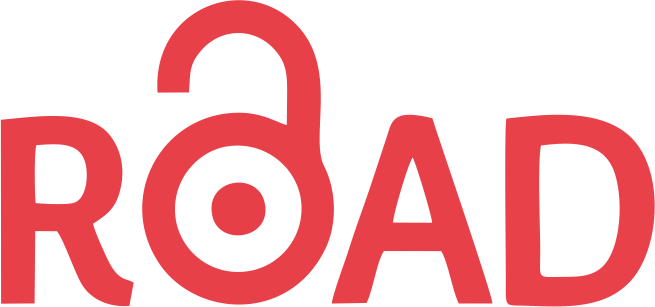Formation Tracking With Size Scaling of Double Integrator Agents
Abstract
This paper considers the problem of distributed formation scaling of Multi-Agent Systems (MASs) under a switching-directed graph where the scaling of formation is determined by one leader agent. A directed-sensing graph where neighboring agents exchange their relative displacement and a directed-communication graph where neighboring agents exchange the information about formation scaling factor and velocity factors are used in this paper. One leader agent which decides the formation scaling factor as well as the velocity of the group is chosen among agents. It is shown that under a switching-directed graph, the group of agents achieves the desired formation pattern with the desired scaling factor as well as the desired group's velocity if the union of the sensing and communication graphs contains a directed spanning tree.
References
Azam, M. A., Mittelmann, H. D., and Ragi, S. Uav formation shape control via decentralized markov decision processes. Algorithms 14, 3 (2021), 91.
Coogan, S., and Arcak, M. Scaling the size of a formation using relative position feedback. Automatica 48, 10 (2012), 2677–2685.
Coogan, S., Arcak, M., and Egerstedt, M. Scaling the size of a multiagent formation via distributed feedback. In Proceedings of 50th Conference on Decision and Control (2011), IEEE, pp. 994–999.
Djamari, D. W. Scalable formation of heterogeneous agents considering unknown disturbances. Asian J. of Control 23, 4 (2021), 1631–1642.
Djamari, D. W. Distributed position estimation approach for multiagent formation with size scaling. Asian J. of Control 24, 1 (2022), 439–447.
Hu, Z., and Yang, J. Distributed optimal formation algorithm for multi-satellites system with time-varying performance function. International Journal of Control 93, 5 (2020), 1015–1026.
Lin, Z., Francis, B., and Maggiore, M. Necessary and sufficient graphical conditions for formation control of unicycles. IEEE Trans. Automatic Control 50, 1 (2005), 121–127.
Lin, Z., Wang, Z., Fue, M., and Han, Z. Necessary and sufficient graphical conditions for affine formation control. IEEE Trans. Automatic Control 61, 10 (2016), 2877–2891.
Massioni, P., Keviczky, T., Gill, E., and Verhaegen, M. A decomposition-based approach to linear time-periodic distributed control of satellite formations. IEEE Transactions on Control Systems Technology 19, 3 (2011), 481–492.
Mesbahi, M., and Egerstedt, M. Graph Theoretic Methods in Multiagent Networks. Princeton Series in Applied Mathematics, 2010.
Moreau, L. Stability of continuous-time distributed consensus algorithms. In 2004 43rd IEEE conference on decision and control (CDC)(IEEECat. No. 04CH37601) (2004), vol. 4, IEEE, pp. 3998–4003.
Naethe, P., Asgari, M., Kneer, C., Knieps, M., Jenal, A., Weber, I., Moelter, T., Dzunic, F., Deffert, P., Rommel, E., Delaney, M., Baschek, B., Rock, G., Bongartz, J., and Burkart, A. Calibration and validation from ground to airborne and satellite level: Joint application of time-synchronous field spectroscopy, drone, aircraft and sentinel-2 imaging. PFG - Journal of Photogrammetry, Remote Sensing and Geoinformation Science 91, 1 (2023), 43–58.
Oh, K. K., Park, M. C., and Ahn, H. S. A survey of multi-agent formation control. Automatica 53 (2015), 424–440.
Ong, C. J., Djamari, D. W., and Hou, B. A governor approach for consensus of heterogeneous systems with constraints under a switching network. Automatica 122 (2020), 109239.
Ren, W. Consensus seeking in multiagent systems under dynamically changing interaction topologies. IEEE Trans. Automatic Control 50, 5 (2005), 655–661.
Ren, W. Consensus strategies for cooperative control of vehicle formations. IET Control Theory & Applications 1, 2 (2007), 505–512.
Schanbusch, R., Kristiansen, R., and Nicklasson, P. Spacecraft formation reconfiguration with collision avoidance. Automatica 47, 7 (2011), 1443–1449.
Sun, Y., Ma, G., Liu, M., and Chen, L. Distributed finite-time configuration containment control for satellite formation. Proceedings of the Institution of Mechanical Engineers, Part G: Journal of Aerospace Engineering 231, 9 (2017), 1609–1620.
Tran, D., Yucelen, T., and Pasiliao, E. Multiplex information networks for spatially evolving multiagent formations. In Proceedings of the American Control Conference (Boston, MA, USA, 2016), pp. 1912–1917.
Wang, C., Xie, G., and Cao, M. Forming circle formations of anonymous mobile agents with order preservation. IEEE Trans. Automatic Control 58, 12 (2013), 3248–3254.
Wang, Y., Chen, X., Ran, D., Zhao, Y., Chen, Y., and Bai, Y. Spacecraft formation reconfiguration with multi-obstacle avoidance under navigation and control uncertainties using adaptive artificial potential function method. Astrodynamics 4, 1 (2020), 41–56.
Zheng, Z., Qian, M., Li, P., and Yi, H. Distributed adaptive control for uav formation with input saturation and actuator fault. IEEE Access 7, - (2019), 144638 – 144647.
Copyright (c) 2024 MENDEL

This work is licensed under a Creative Commons Attribution-NonCommercial-ShareAlike 4.0 International License.
MENDEL open access articles are normally published under a Creative Commons Attribution-NonCommercial-ShareAlike (CC BY-NC-SA 4.0) https://creativecommons.org/licenses/by-nc-sa/4.0/ . Under the CC BY-NC-SA 4.0 license permitted 3rd party reuse is only applicable for non-commercial purposes. Articles posted under the CC BY-NC-SA 4.0 license allow users to share, copy, and redistribute the material in any medium of format, and adapt, remix, transform, and build upon the material for any purpose. Reusing under the CC BY-NC-SA 4.0 license requires that appropriate attribution to the source of the material must be included along with a link to the license, with any changes made to the original material indicated.






